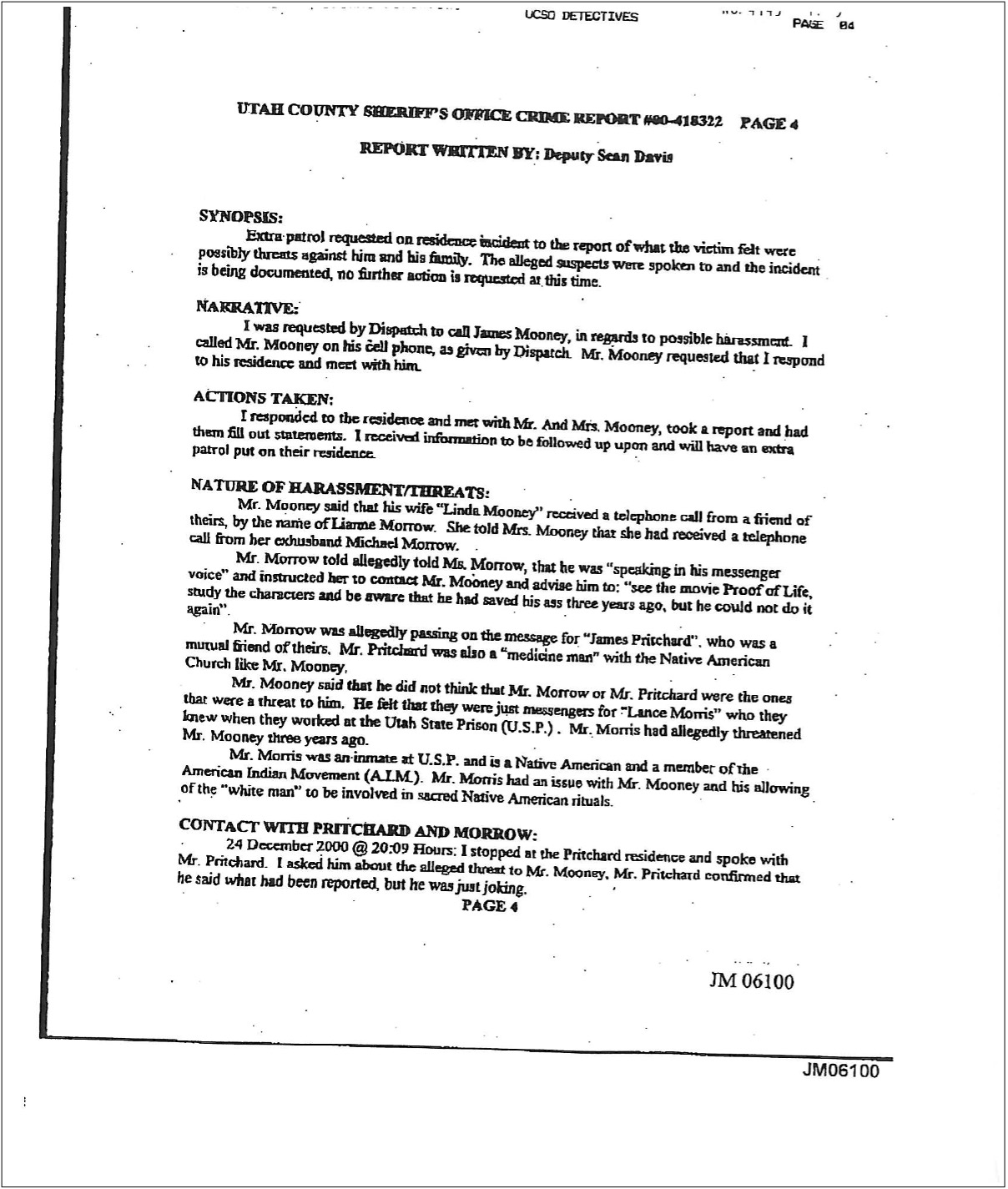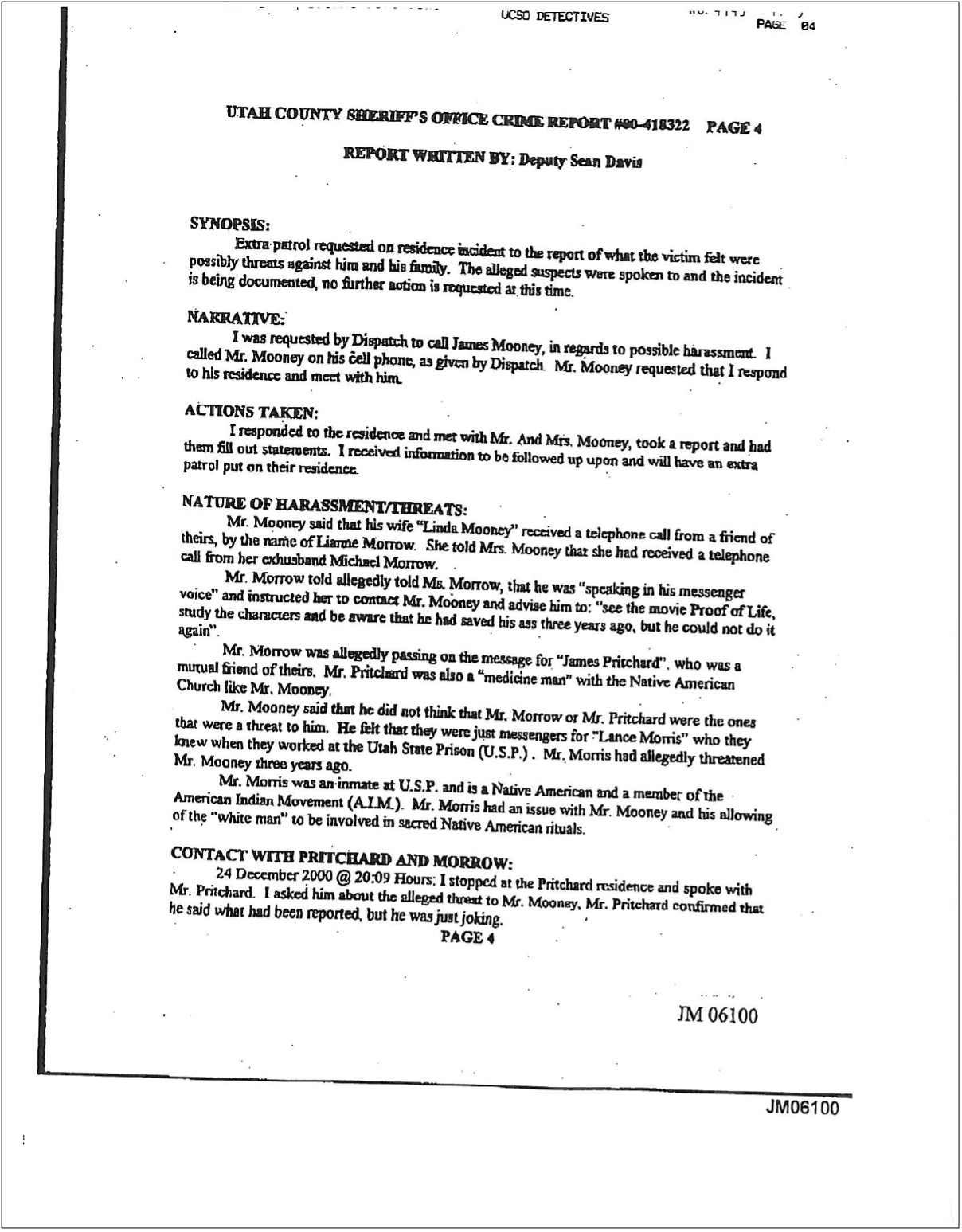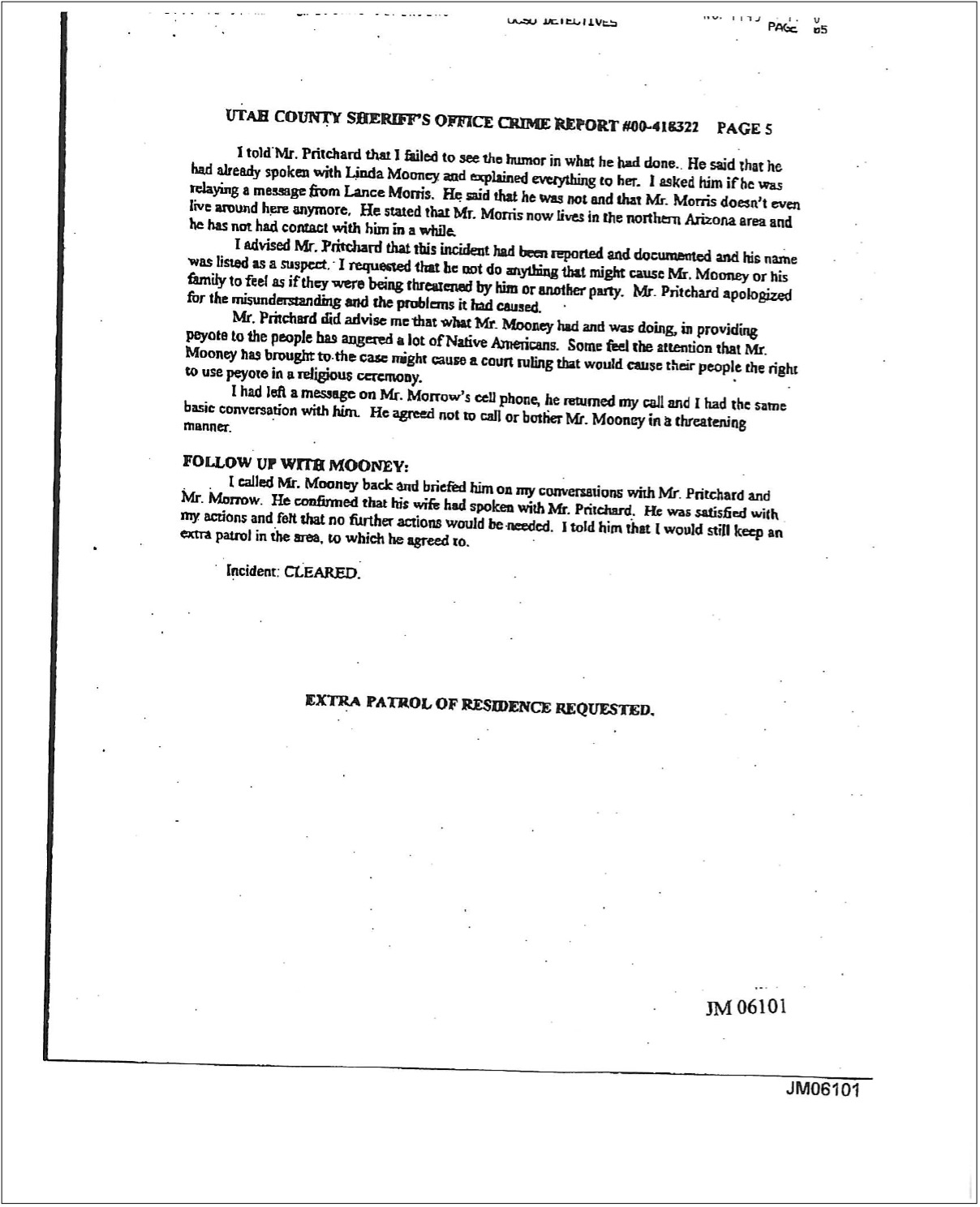Overcoming the Movement to Deride Native American Spirituality and Culture

Overcoming the Movement to Deride Native American Spirituality and Culture
by James W. F. E. Mooney
From the moment the first European settlers set foot on the North American continent, the lives, culture, and spirituality of the Native American’s indigenous culture have been systematically attacked by four atrocities. The four atrocities perpetuated against the Native Americans are: extermination order, cultural genocide, denial of civil liberties, and character assassination. Treaties were made and broken, however the Native American culture and spirituality are still here, and those treaties are still valid and in effect, even though the states didn’t honor them.
The Native Americans have been wholly discriminated against in every aspect of their lives by those in power. The powerful are motivated by power, land, and resources which add to their wealth. Money and power were the motivations behind every discriminatory action perpetrated against the Native Americans. Unfortunately, the people with the most money are often in position to control members of government. People with money want more money, and they will influence politicians to generate laws to protect their interests. Whether these discriminatory actions were taken by the state or federal government, military, political, business, or religious leaders, it really doesn’t matter. To fully understand the epic proportions of these atrocities, we have created four categories into which they fall:
Extermination Order: The Extermination Order refers to the systemic violence and forced removal of Native American communities from their ancestral lands. This policy, often driven by government and military actions, led to the loss of countless lives and the decimation of numerous tribes. This brutal approach aimed at eradicating Native American populations and forcibly relocating them to reservations.
Cultural Genocide: Cultural genocide involved a deliberate effort to suppress and undermine the cultural practices, languages, and traditions of Native American tribes. This was achieved through policies such as the forced assimilation of Native American children into boarding schools, where they were stripped of their cultural identity and language. The goal was to eradicate the distinct cultural heritage of Native American communities.
Violation of Civil Liberties: Native Americans experienced severe violations of their civil liberties, including the denial of basic rights, land theft, and loss of autonomy. The imposition of treaties and policies that were often broken, such as the Trail of Tears, exemplified these gross injustices, resulting in the displacement and suffering of indigenous peoples.
Character Assassination: Character assassination involved the misrepresentation and dehumanization of Native Americans in popular media, literature, and government propaganda. This harmful portrayal perpetuated stereotypes, which justified further mistreatment and discrimination against Native Americans. It perpetuated negative biases and continues to impact their communities today.
For specific examples and an in-depth explanation of these atrocities, we recommend reading this webpage.
These atrocities collectively represent a dark chapter in American history and the ongoing struggle for justice and recognition of Native American rights and dignity.
Three men have made valiant stands for the preservation of the Native American culture and its spirituality and in overcoming the four atrocities: Seminole War Chief and medicine man Osceola, James Mooney, Smithsonian ethnographer, and James “Flaming Eagle” Mooney, great-great grandson of Osceola and great-grandson of James Mooney, has won legal battles ensuring the rights of members of the Native American Church who sit in bone fide Native American ceremonies to worship with sacred medicines and experience the full ramifications of the U.S. Constitution.
Seminole War Chief and Medicine Man, Osceola
In Florida, one Seminole war chief and medicine man led the way against the U.S. Army and government. Osceola, also known as Billy Powell, was born around 1804 in what Alabama is now, but he became most famous for his role in the resistance against the forced removal of the Seminole people from their ancestral lands in Florida. The Seminole tribe was a unique amalgamation of Native American and African American cultures due to interactions and intermarriages over the years.
Osceola’s leadership and charisma made him a central figure in the resistance against the Indian Removal policies of the U.S. government, particularly the enforcement of the Indian Removal Act of 1830. This policy aimed to relocate Native American tribes to lands west of the Mississippi River, thus stealing their ancestral lands for European settlement.
The Indian Removal Act of 1830, signed by President Andrew Jackson, posed the greatest threat to Osceola’s desire for Seminole autonomy. Between 1832 and 1838, this federal legislation directed the deportation of the Cherokee, Creek, Choctaw, Chickasaw, and Seminole tribes west of the Mississippi River to Indian Territory, which is present-day Oklahoma.
The Supreme Court, led by Chief Justice John Marshall, ruled that Georgia’s laws had no jurisdiction over the Cherokee Nation’s territory, thus making the Indian Removal Act unconstitutional. Nevertheless, President Jackson defied the Supreme Court, and emboldened the state governments to proceed with removal policies, eventually leading to the Trail of Tears.
Prior to the Supreme Court’s ruling, The Treaty of Payne’s Landing was negotiated with some of the Seminole leaders and the federal government, but it faced opposition from Osceola and many other Seminole people who did not agree with the terms of the treaty. Osceola emerged as the leader during this time and was vocal in his opposition to the forced removal. He refused to give up his culture and his spirituality and be associated with a treaty that would likely be broken. Legend has it that Osceola was so upset by this treaty, he stuck a knife through it.
Osceola’s refusal to sign the Treaty of Payne’s Landing and his subsequent leadership in resisting the forced removal contributed to the outbreak of the Second Seminole War, which lasted from 1835 to 1842. Their refusal to leave their lands led to a protracted guerrilla war between the Seminoles and the U.S. military. Osceola was trained at West Point, so was well versed in the military tactics of the U.S. military. The Seminoles used their knowledge of the Florida terrain to their advantage, making it difficult for U.S. forces to capture them. The conflict officially ended in 1842, although some Seminoles managed to evade capture and remain in Florida. One of these groups was the Oklevueha Band of the Seminoles.
One American Major Ethan Allen Hitchcock wrote about the wars with the Seminoles, and vented his bitter discontent with the conflict: “The government is in the wrong, and this is the chief cause of the persevering opposition of the Indians, who have nobly defended their country against our attempt to enforce a fraudulent treaty. The natives used every means to avoid a war, but were forced into it by the tyranny of our government.”
In October 1837, Osceola was lured into a meeting under a flag of truce by U.S. officials, who were hoping to negotiate a peace settlement. However, this meeting was a ruse, and Osceola was captured by U.S. troops. His capture was a significant blow to the Seminole resistance movement and began the process of Congress defunding the war.
After his capture, Osceola was imprisoned at Fort Moultrie in South Carolina. He and other captured Seminole leaders were subjected to difficult living conditions and suffered from illness. Osceola’s health deteriorated, and he reportedly suffered from respiratory issues, which were exacerbated by the harsh conditions of his captivity.
Osceola, his family, and warriors were removed from Ft. Marion, FL, and transported to Ft. Moultrie, South Carolina. While Osceola was incarcerated at Ft. Marion, he learned that the United States Military had discovered where Harjo town was located (the secluded sanctuary for Seminoles elderly, women, and children) and had ordered General Hernandez of the U.S. military to lay waste of Osceola’s hidden sanctuary. Upon learning of this march to massacre his people’s elderly, women, and children, he ordered several of his warriors to escape from their fort stockade to save his people from being slaughtered. Osceola’s escaped warriors were only days late to rescue their families. When they arrived, they found several of their women horribly dismembered, and their babies impaled on pointed stakes. However, thirty-three of Harjo tribal members escaped into the Everglades and avoided being captured or murdered. Decedents of these people still reside in the very place that Harjo Town was laid to waste.
Osceola, his family, and warriors were removed from Ft. Marion, FL, and transported to Ft. Moultrie, South Carolina. Osceola died in captivity at Fort Moultrie on Jan. 30, 1838, of a form of ‘strep throat’. The exact cause of his death is disputed. While some accounts suggest that he died from complications related to his respiratory illness, others claim that he was poisoned. Regardless of the exact cause, He died there. Osceola’s death in prison at Fort Moultrie, SC, was noted on front pages around the world. In 1838, he was the most famous Native American.
Shortly after Osceola’s death, his mother, wives, and daughters were placed on a boat to place them on the Trail of Tears, however, prior to reaching Oklahoma, they escaped into the Arkansas Ozarks.
James Mooney, American Ethnographer, Anthropologist, and Folklorist
James Mooney was an American ethnographer and anthropologist born on February 10, 1861, in Richmond, Indiana. He grew up in Indianapolis and developed an early interest in the cultures of Indigenous peoples, particularly Native American tribes. Mooney pursued his passion for anthropology and ethnography, and his work would later become pivotal in the study and preservation of Native American cultures. He understood that the Native Americans are deeply connected to all things in a spiritual manner. The Native American culture is inextricably connected to their spirituality and cannot be separated. James Mooney understood that by protecting the Native American spiritual practices the entire culture could be preserved and protected.
Mooney’s career as an ethnographer began in the late 1880s when he joined the Bureau of American Ethnology (BAE), which was part of the Smithsonian Institution. He conducted extensive fieldwork, living among Native American tribes from the east to west coast to study their customs, languages, and religious practices. One of his most significant works was his research on the Cherokee people. Mooney lived with the Cherokee for several years, learning their language and documenting their sacred rituals and myths. His thorough understanding of the Cherokee culture led to the publication of “The Sacred Formulas of the Cherokees” in 1891, which remains a valuable resource for understanding Cherokee religious practices. Mooney published nine books about the Native Americans, including some of the most detailed early research into peyote.
In the 1890s, James Mooney, spent time with the Kiowa in Oklahoma, researching the spiritual use of peyote. Noting the political trends to prevent the Native Americans from exercising their spiritual practices, he advised peyotists of various Oklahoma tribes to obtain a legal charter to protect their religious freedom. Mooney, with the input of the various tribal leaders, wrote the by-laws and incorporation papers of the Native American Church in 1918, thus establishing the legality and protection for the sacred ceremonies and medicines, especially the ceremonial use of peyote. Through this legal recognition, the Native American Church has been able to protect its religious freedom and cultural heritage, despite ongoing legal challenges and efforts to restrict the use of peyote in some areas. At this time, Congress was quite concerned about the use of peyote, and over nine bills were introduced between 1916 and 1937. James Mooney went back to Washington to argue before the House Subcommittee on Indian Affairs in support of the peyote religion. Mooney was able to successfully argue against these bills, and none of them were ever made into law.
However, Mooney’s work was criticized by some Indigenous activists, scholars, and descendants for what they perceived as a lack of understanding and for presenting a skewed perspective. Critics, including major religions as well as other Native Americans, were so incensed by his work to protect peyote, that they went to Washington and insisted he be removed from his position at the Smithsonian.
Activists from Christian religions and other Native Americans worked hard to malign his name and all the good works he had done. As a result, James Mooney’s writings and his works have been removed from the public and are only accessible through special permission. He was prevented from continuing his research into the Native Americans, his works locked away in the vaults of the Smithsonian, and he was banished from the work and people he loved the most. James Mooney died a broken man.
James Warren “Flaming Eagle” Mooney, Elder Seminole Medicine Man
James Warren “Flaming Eagle” Mooney has worked to ensure that the civil liberties of all Native Americans are protected and available to all. Living most of his life without the conscious knowledge that he was Native American, James Warren Mooney was awakened one night out of a deep sleep by a phone call from his Tribal Chief Little Dove Buford calling him home to the medicine. This call initiated years of study, travel, and sitting with medicine people from all over the world. James began an intense study of the various ceremonies and a deep dive into the world of healing through peyote. However, not everyone supported James in his role as a Seminole Medicine Man and his honoring his Native American heritage.
From successfully working in the State of Utah’s Drug Task Force and illegally firing him from his directorship of the highly successful ‘Last Shot Program prison system, that had lowered the state of Utah Correctional systems recidivism rate to under 30%, scrolling down to the END OF THE PROGRAM, to the illegal raiding of Oklevueha Native American Church, his family’s residence and twice illegally arresting, he and his wife, Linda, James “Flaming Eagle” Mooney has been a target for those who wish to continue degrading and working against the Native Americans from experiencing their constitutional rights.
James believes there has been an ongoing conspiracy that begun entrenching itself in our government Policies and laws by President Andrew Jackson not honoring the Supreme Court ruling that the reservation system was unconstitutional, Wayward Christian Churches, Commerce’s Greed led Leaders, Land developers and educational systems to deny Native Americans from living their lives as American citizens, and in dishonoring their Earth based spiritual culture, by registering their most Sacred Sacraments (Peyote and Cannabis) schedule One Narcotics and desecrating their temple of worship, the EARTH.
James Mooney and his wife, Linda, successfully stood against drug, racketeering, and fraud charges brought against them by the State of Utah Attorney General Mark Shurtleff* and the US Federal Government. The state accused them of providing drugs, i.e., peyote, to non-Indians and Indians that were not tribal members. The Federal case took the whole situation much further calling into question James’ heritage and stories about his training, relying on lies, false statements, and the interference of Native American Rights Fund (NARF) Founded by John Eco Hawk*, and Bureau of Indian Affairs (BIA) Larry Eco Hawk* Director of the BIA, into the state and federal proceedings. The various agencies went to great lengths to lie, distort truth, and even redact testimonials supporting James and Linda Mooney. The state and federal governments knew the only way they could “win” was to have the Mooney’s plea bargain. To that end, they threatened to take their children away, called James the “Jim Jones of Indians,” and required them to take frequent drug tests, with the understanding that if they missed any of them, they would be arrested again. Of course, one of the tests went missing, but fortunately the Mooney’s had a receipt from the drug test center.
Because of the many blessings from Indian elders, and the confirmation that James was indeed who he said he was, the Mooney’s case was dismissed by the Federal government prior to evidentiary hearing. This is the first time a federal case was dismissed before any appearance before the court. James believes winning this case was the fulfillment of James Mooney’s prophecy that decedents of the Indigenous American Native cultures will be able to experience the full ramifications of their constitutional rights.
James has stood as an outspoken advocate for civil rights for all humans. He has been recognized for his work in law enforcement, in the prison systems, as a member the Priory of Indigenous People, Hospitaller Order of Saint Lazarus of Jerusalem, participated in the United Nations Declaration on the Rights of Indigenous People, and has been recognized by Utah Governors Leavitt, Herbert and Cox, along with President Obama. James and Linda Mooney have been recognized as Ambassadors to the World for the Sacred First Nations for Peace.
Two ancestors and one man, worked over generations to preserve and protect the rights of the Native Americans and overcome the four atrocities. These three men represent the how the four atrocities were systematically put upon them, and how they overcame them. Osceola faced extermination and fought those edicts with war. James Mooney worked to protect the Native Americans from cultural genocide. The government worked very hard to make the culture, the ceremonies, even the herbal medicines used by the tribes illegal under United States laws, and ultimately worked to destroy and eliminate the native culture. James Mooney recognized what was happening and worked quickly to write the charter for the Native American Church, thus codifying and protecting their spirituality through the creation of a government approved church. James and Linda Mooney overcame and survived, 2 threats on James’s life and 1 to kill his entire family lives by Jim Pritchard*, the character assassination and the attempted subversion of their civil rights and won the right for all humans to be able to sit in sacred ceremony and partake of Creator’s medicines and to experience the full ramifications of the U.S. Constitution.
*LDS Church Temple Card Holders
Utah County Sheriff’s Report investigating threats to kill James Mooney’s and his entire family by Jim Pritchard LDS Temple card holder / Lance Morris





[1] Utah County Sheriff’s Report investigating threats to kill James Mooney’s and his entire family by Jim Pritchard LDS Temple card holder / Lance Morris
